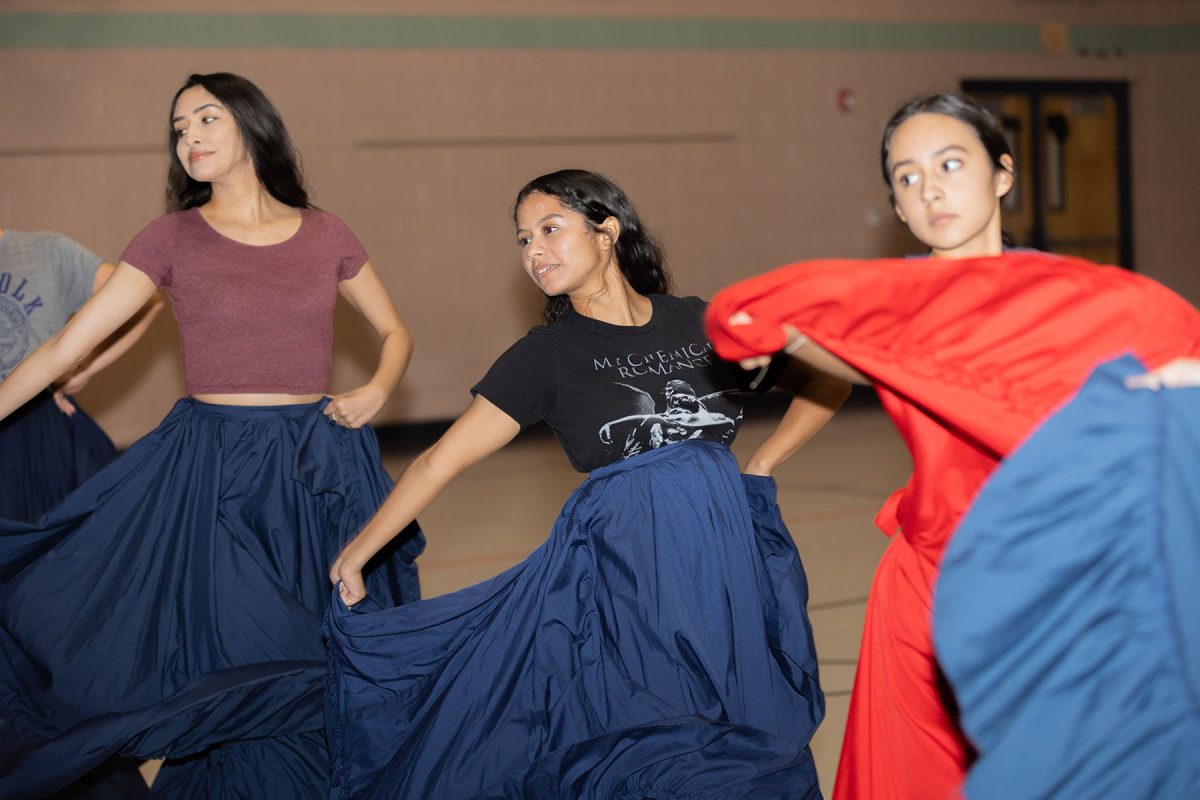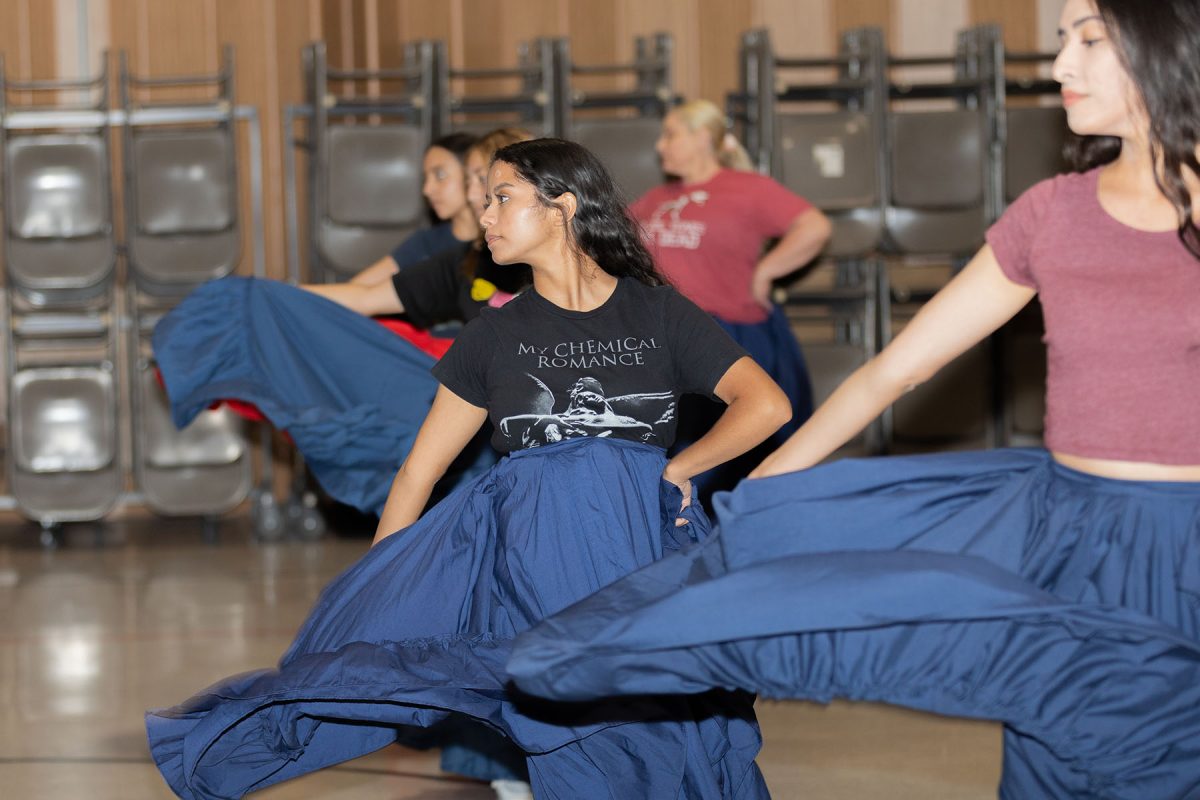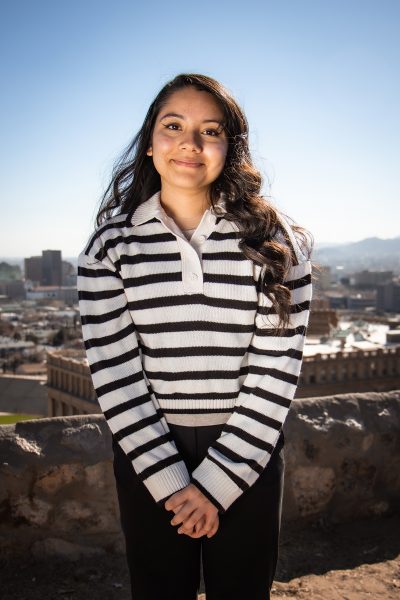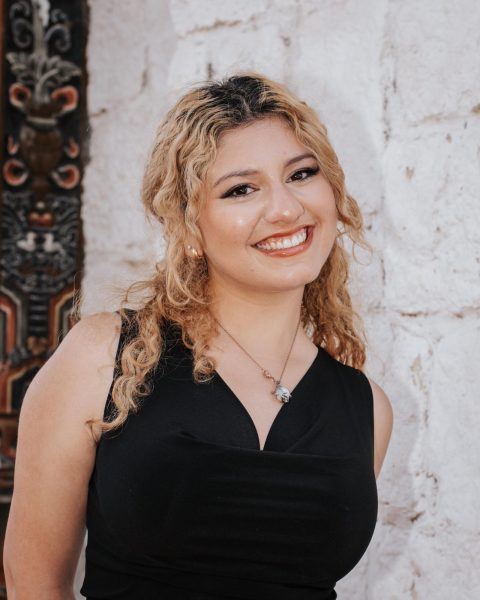Like a butterfly in flight, the fluttering movement of a folklórico dress gives enchanting performances for one to remember. In addition to the music, folklórico performances are admired by people of all ethnicities. The fusion of both Mexican and American cultures seen in El Paso gives a unique environment where people can express themselves comfortably.
In the United States, Hispanic Heritage Month is celebrated Sept. 15 through Oct. 15 by citizens who cherish their origins. Being a border city, El Paso has a large population of Mexican Americans who never want to forget their roots.
UTEP is one of the schools that holds the largest percentage of Hispanic students in America with 84 percent of students being Hispanic. Being able to see a glimpse of Mexico from UTEP, many first-generation international college students attend the university in search of education to expand their opportunities. These students feel at home, as the El Paso community shows appreciation for the Hispanic heritage. From cuisine to art galleries, to local businesses promoting the foreign way of life, the community ignites Mexican pride in a multitude of ways. One of those ways is through dance. Grupo Valle Del Sol is a dance company that performs folklórico (a Mexican originated dance). Basing their business on family, this company says they put emotion in their performances to keep their culture flourishing.
Mary Lou Romero, general director of Grupo Folklórico Valle del Sol, admires how her company prioritizes family. Starting the dance company 36 years ago, Romero was able to pass her passion of dancing to her children, allowing the company to expand.
“Our group is based on family, and I think that’s what keeps it alive,” Romero said. “It’s one of the main things we like to stress, we are family oriented.”
While El Paso residents with Mexican ties are often exposed to folklórico, some members of the audience find the dance to be foreign. Mike Romero, son of Mary Lou Romero and dances for Grupo Folklórico Valle del Sol, emphasizes how important it is to be educated about the dance.
“The education is extremely important,” Mike said. “People really have misconceptions about our culture.”
For example, Mike says he encountered an experience of someone confusing folklórico with flamenco (that is of Spanish origin). While they may have seen it as a small mistake, it caused big offense to Mike as well as his culture.
Grupo Folklórico Valle del Sol educates their dancers about the significance of their costumes and performances. Since this group includes younger dancers, older members make sure the children are well-informed about their culture to not spread misinformation.
“The younger generations have to keep it going,” Mike said. “Because they truly understand what this is really about.”
Unfortunately, folklórico is often overlooked with other customs like mariachi.
“Mariachis are the big thing, but you don’t see that with the folklórico,” Mike said. “I think it’s important that we don’t just center it on one thing.”
Although it is important to celebrate Hispanic customs, focusing on just one, such as mariachis may limit the knowledge that people have on their culture.
“When we have our Hispanic Heritage month this is the opportunity to really bring everything about our Mexican culture to the forefront, not just the mariachis,” Mike said.
UTEP student Nataly Alvarado, a junior majoring in education, has been dancing with the group for 10 years. Grupo Folklórico Valle del Sol’s welcoming nature allowed Alvarado and her family to continue to dance with the group. Now, her little sister has begun to dance as well because of the cultural importance. Due to Alvarado’s parents coming from Juárez, Mexico, the multiculturalism is sometimes difficult to manage.
“I feel like there’s times where I’m too Americanized,” Alvarado said. “But I’m not fully American I have to be a little bit more [Mexican].”
However, with folklórico, Alvarado can practice customs to not become consumed by American culture.
“I like expressing my culture [through folklórico],” Alvardo said. “I always remember my Mexican roots.”
The struggle of having multiple origins makes many have difficulty identifying themselves and adolescents sometimes struggle to label their ethnicity. It is through practicing these customs like folklórico, mariachi, El Grito De Dolores and Dia De Los Muertos and more can help people resonate with their roots more comfortably.
Grupo Folklórico Valle del Sol is proud to promote their most anticipated dance of the year celebrating Dia De Los Muertos, performing Oct. 28 and 29 in Old Mesilla, Las Cruces. Grupo Folklórico Valle del Sol invites the community to view the ‘hidden treasure’ of El Paso as said by Romero.
Hispanic Heritage month celebrates roots of many El Paso citizens. Unfortunately, some families are facing the dilemma of younger generations disconnecting from their roots. However, through educating younger generations about their origin, such as Grupo Folklórico Valle del Sol, Hispanic traditions can remain alive. This makes El Paso one of the most welcoming cities, being able to wave the Mexican flag and American flag in unison.
Sofia Sierra is a contributor and may be reached at [email protected]










